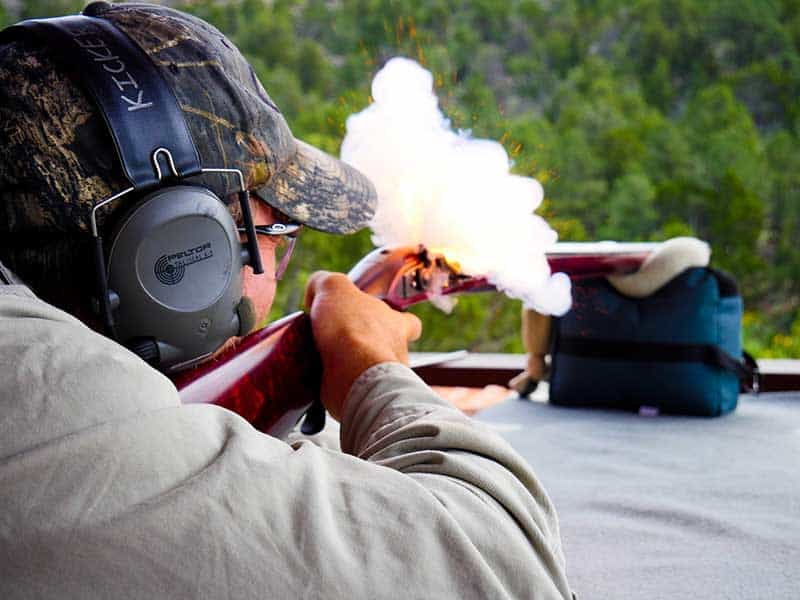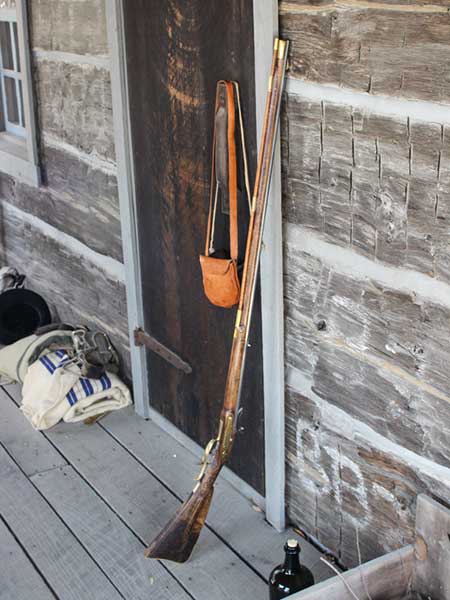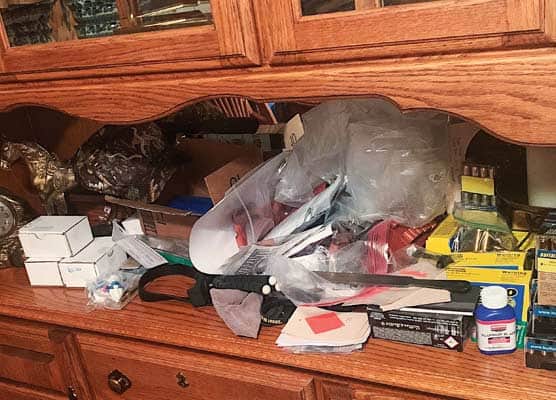Blackpowder blues
I don’t blame Fess Parker but I can point fingers at Kirk Douglas and Dewey Martin in The Big Sky, Chuck Heston and Brian Keith in The Mountain Men, and most assuredly at Robert Redford in Jeremiah Johnson.
I think Clark Gable in Across the Wide Missouri bears some responsibility as well. They all pushed me into blackpowder shooting and being something of an elitist, I didn’t want anything to do with modern inline muzzleloaders. Oh, no, I wanted a caplock only because flintlocks seemed a bit too primitive and modern in-lines are just too modern. And, besides, I just love that blue smoke!
Many, if not most states have separate “primitive weapons” opportunities for big game and that just enticed me more.
At the old Fishing & Hunting News, where I worked back in the 1980s and 90s, we got a shipment of Lyman Trade Rifles and I bought one that had been returned by somebody. It was a .54-caliber rifle with basic sights, brass furniture and a hardwood stock that had been horribly stained at the factory. It became a project rifle and turned into a dandy shooter.
I spent one entire weekend removing the stain and the following week sanding and refinishing the stock, which turned out to have something of a subtle pattern in the wood under that ugly stain. Having smoothed the wood down with 1,000 grit sandpaper and then finishing with fine steel wool, the stock sat for several days before I hand-rubbed the new finish consisting of warm linseed and tung oil, and warmed neutral shoe wax into the dry wood. It now sheds water superbly and every winter near the wood stove, I give the stock another rub with the shoe wax.
While that was going on, I acquired a different trigger guard, brushed out the bore and cleaned it out with boiling soapy water. I installed a new nipple and got rid of the wood ramrod, replacing it with a synthetic because I just didn’t trust the wood to be hickory.
Learning Powders
If you’re going to delve into the world of black powder, it’s smart to read up on powders. Black powder is an explosive, not a smokeless propellant, and for a traditional front-stuffer I think black powder keeps things as close as possible to what they used 175 years ago on the frontier.
There are several grades of black powder for sport shooting, the most common being FFg and FFFg, though there is coarse Fg and finer FFFFg. The more “F”s the finer the powder, and the faster it burns. I know guys who use FFFFg in their flintlock flash pans and in cap-and-ball revolvers, though Pyrodex Pellets have taken over much of that market.
The first thing I noticed is that recoil from a muzzleloader seems to rock one backwards rather than sharply pounding the shoulder and cheek. That’s a plus in my book, and it doesn’t seem to affect accuracy.
Of course I experimented with Pyrodex, which shoots a bit cleaner while black powder seems to ignite a little better in damp conditions. What I noticed early on is that the same volume load of Pyrodex seemed to shoot to a different point on the target than a charge of black powder; not by much, but enough to notice.
Pyrodex is a great black powder substitute and is popular with the in-line folks, along with Triple Seven. But I still have a soft spot for black powder.
For a few years, I hunted elk with black powder guns — by that time, I had acquired a handsome Hawken Custom from Thompson/Center with its all-blue polished furniture — and had a very good time. I never got close to an elk, but there’s just something about being out there with one shot to get the job done.
The Hawken Custom is a .50-caliber rifle with an adjustable rear sight, double set triggers and with a 1:48-inch rifling twist, it can handle both patched round balls and heavier conical bullets. I found 80-grains of FFg black powder launched a round ball well enough to hit a bowling pin at 75 yards off a rest.
My wife made handsome cloth covers for both guns and I bought a tomahawk, powder horn and a couple of “possibles bags” (pouches) in which I carried greased patches, round balls and bullets, and some “speed loaders” that held a pre-measured powder charge in one end of a tube and the bullet/ball in the other.
Time Consuming Addiction
Shooting black powder caplocks is addictive, and it is also time consuming.
Even a fast reload takes the better part of a minute, and usually more for clumsy boobs like myself. But there is a special satisfaction found in being able to put a shot into the black at 100 yards, reloading and repeating.
Part of the attraction is the company one meets. On one hunt in the central Cascades, I met a guy who had built his rifle from scratch, a beautiful Hawken-style .58-caliber caplock with a handsome stock and traditional curved steel buttplate, double set triggers and what looked to be handmade sights.
Another time I camped near some guys who were as down-to-earth as they come, inviting me to share their campfire, swap a few stories and enjoy a libation. Early the next morning, we jumped an elk but never got a shot.
What is equally time consuming as the shooting is the cleaning. Black powder is corrosive, and to properly maintain a muzzleloader, one needs to thoroughly clean it. My regimen starts by dismantling the rifle, removing the barrel from the stock and unscrewing the nipple, setting it up vertically and using hot water, and sometimes soap, to cleanse the bore.
This requires a good bore mop, a fair number of patches you will use only once (I like ripped up T-shirts) and a good ramrod.
While the barrel is still hot, run a couple of dry patches in and out, let it stand and then run a greased patch down the bore. I use Natural Lube 1000+ for my lube. The stuff smells like a popular heating rub for muscle aches, but in my experience it works very well to cure a barrel.
Other people have used everything from Crisco to Ballistol for cleaning and lubrication. Never quarrel with people who can fire at the head of an axe, splitting their bullet to break clay targets placed on either side!
It Can Stink
There is a downside to all of this frontiersman stuff, and it’s the smell that can develop from shooting black powder a lot.
It can stink like rotten eggs, which will make you real popular around the house. Be sure to clean your guns outside when possible, or in the garage or an out-building. Always give the underside of the barrel a good wipe of oil before reassembling.
Pyrodex may not smell quite as bad as cleaning out black powder residue, but the smell is possible. Don’t think that by using Pyrodex or some other substitute you can skip cleaning or escape the odor. Not going to happen!
Anybody can shoot an in-line, and there are some superb models available. But I’m devoted to those old Hawken-style guns. Sure they’re passé, but at my age, so am I.









